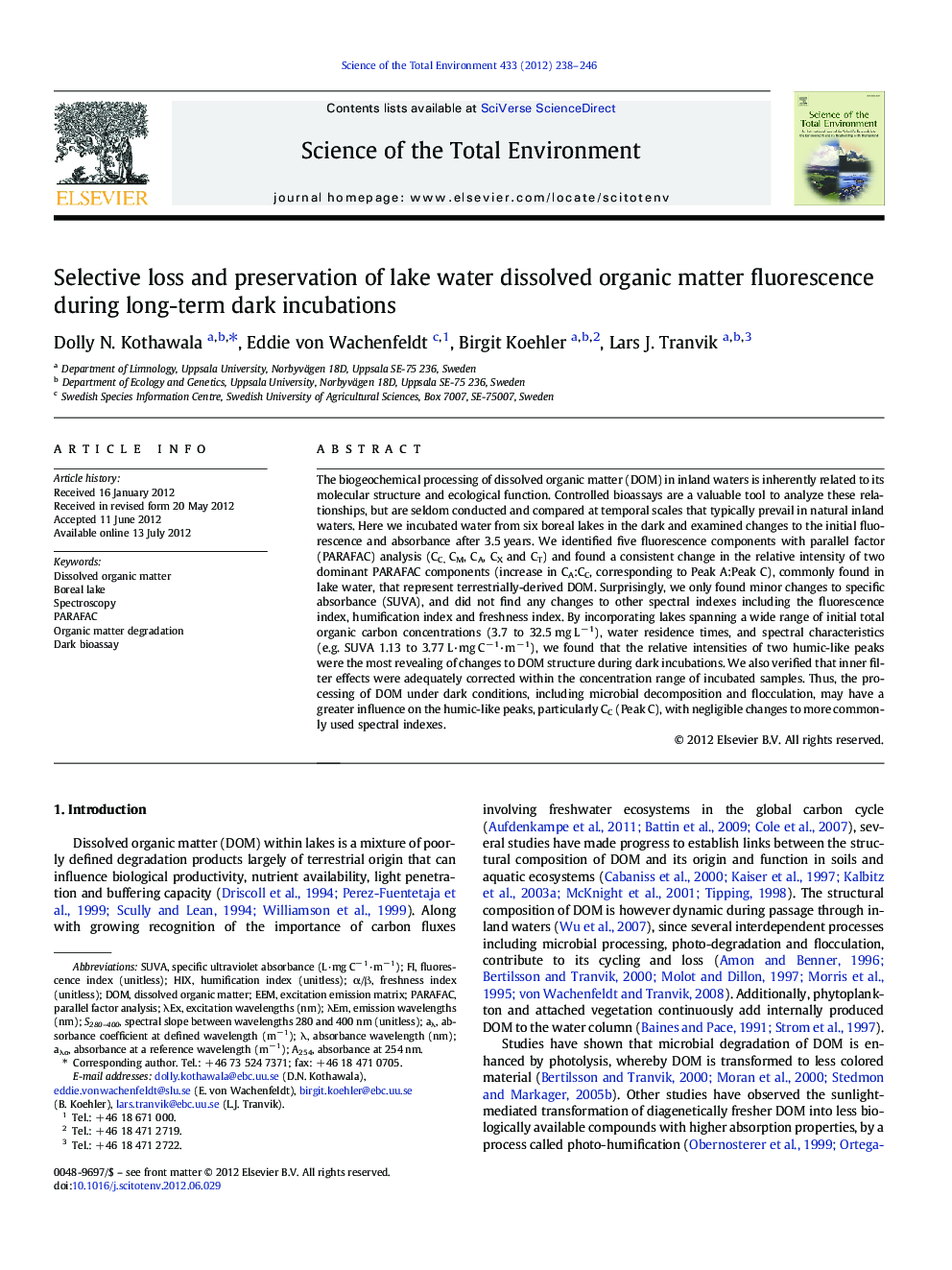| Article ID | Journal | Published Year | Pages | File Type |
|---|---|---|---|---|
| 6334060 | Science of The Total Environment | 2012 | 9 Pages |
The biogeochemical processing of dissolved organic matter (DOM) in inland waters is inherently related to its molecular structure and ecological function. Controlled bioassays are a valuable tool to analyze these relationships, but are seldom conducted and compared at temporal scales that typically prevail in natural inland waters. Here we incubated water from six boreal lakes in the dark and examined changes to the initial fluorescence and absorbance after 3.5 years. We identified five fluorescence components with parallel factor (PARAFAC) analysis (CC, CM, CA, CX and CT) and found a consistent change in the relative intensity of two dominant PARAFAC components (increase in CA:CC, corresponding to Peak A:Peak C), commonly found in lake water, that represent terrestrially-derived DOM. Surprisingly, we only found minor changes to specific absorbance (SUVA), and did not find any changes to other spectral indexes including the fluorescence index, humification index and freshness index. By incorporating lakes spanning a wide range of initial total organic carbon concentrations (3.7 to 32.5 mg Lâ 1), water residence times, and spectral characteristics (e.g. SUVA 1.13 to 3.77 L·mg Câ 1·mâ 1), we found that the relative intensities of two humic-like peaks were the most revealing of changes to DOM structure during dark incubations. We also verified that inner filter effects were adequately corrected within the concentration range of incubated samples. Thus, the processing of DOM under dark conditions, including microbial decomposition and flocculation, may have a greater influence on the humic-like peaks, particularly CC (Peak C), with negligible changes to more commonly used spectral indexes.
⺠One of the two common DOC fluorescence peaks degrades faster in the dark. ⺠Dark degradation processes within lakes could alter DOC structure. ⺠Previous spectral indexes should be interpreted with care for dark incubations.
